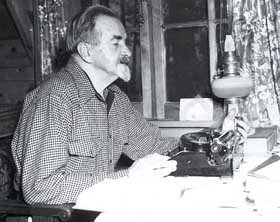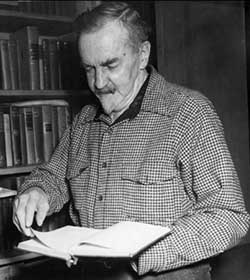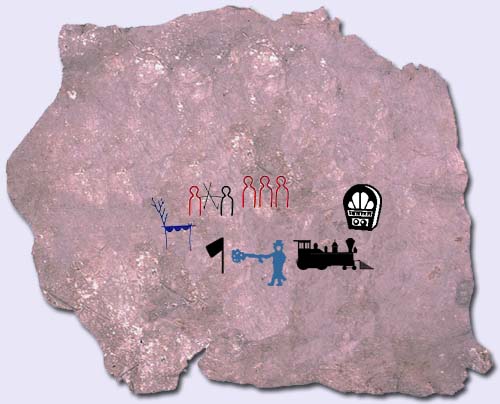|
Lesson 3
Charles Badger Clark, Jr., and Ida Anding McNeil
|
|
|
Before long,
South Dakota had poets and writers to sing its praises. One of the
best known was a man named Badger.
|
|
Charles Badger
Clark, Jr.
|
|
Charles Badger
Clark, Jr., wrote cowboy poetry. He painted word pictures of cowboys
at work. He praised western values. He sang of the beauty of the
Black Hills. Clark was only three months old when he came to South
Dakota in 1883. By the time he graduated from high school, he had
lived in the towns of Plankinton, Mitchell, Huron, and Deadwood.
|

Photo courtesy of South Dakota State
Historical Society
|
|
|
Then his life
changed. He got
tuberculosis. A
dry climate often helped to cure this disease. Clark spent four
years as a ranch hand near Tombstone, Arizona. He wrote poems about
working on the ranch. His stepmother sent one to a magazine. The
magazine was called the Pacific Monthly. Clark soon wrote for
the magazine all the time.
|
|

Photo courtesy of South Dakota State
Historical Society
|
In 1910, Clark
returned to South Dakota. He settled in the Black Hills. His cabin
in Custer State Park is called Badger Hole. He wrote several books of poetry. One book was called Sun and Saddle
Leather. His book Spike was full of short stories. Clark’s
poems "The Job" and "A Cowboy’s Prayer"
became favorites all over the United States.
To earn
enough money to live on, Clark toured the country telling stories.
In 1939, the governor named him poet
laureate
of South Dakota. He died in 1957.
|
|
Ida Anding McNeil
|
|
|
In the 1920s,
farmers and ranchers were often
isolated.
Towns were far apart in South Dakota, and roads were still poor.
Telephones and radios helped shrink the distance. They put rural people
in touch with the rest of the world. Ida Anding McNeil was a pioneer
in radio
broadcasting.
Ida Anding
was born in 1888. She came to South Dakota when she was eight years
old. Her father worked on steamboats. He came to fix a ferry on the
Missouri River at Pierre and stayed. After Ida Anding graduated from
high school, she worked for the South Dakota State Historical
Society. She made the first state flag. She resigned from her
job when she married Dana McNeil.
|

Photo courtesy of South Dakota State
Historical Society
|
|

Winter Count
|
Dana McNeil
worked on the Chicago & North Western Railway He also had one
of the first
amateur radio
licenses in the country. Ida Anding McNeil broadcast the news to him
during his train trips between Rapid City and Pierre. People on
farms and ranches listened to her broadcasts. She started to say things for these
extra ears to hear. She set up a schedule. People always knew when
to turn on their radios for the news from Pierre.
|
|
In 1927, Ida
Anding McNeil
got a
commercial license. Her
station was KGFX. She gave many hours to public service. Her most
popular program was "Hospital News." McNeil told about the
patients at the hospital in Pierre. Doctors and ranchers liked this
service. Ranch families who lived far away could learn about family
members. McNeil let the family know when to come to town to take the
patient home. McNeil also reported the weather so that ranchers
could get their livestock in if a storm was coming.
|

Photo courtesy of South Dakota State
Historical Society
|
McNeil was
given many awards for her service to the community. She is in the
South Dakota Broadcasters' Hall of Fame. She died in 1974.
|
| Vocabulary |
|
| amateur (adj.), set up for fun and not for pay
broadcasting (n.), sending out a radio or television
program
commercial (adj.), set up to make money
|
isolated (adj.), without any near neighbors; separate;
alone
laureate (adj.), honored
tuberculosis (n.), a disease that causes sores on lungs and
bones
|
|
|